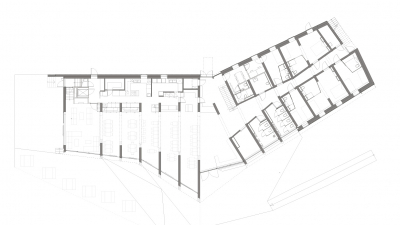Pulpit Mountain Lodge
Site conditions/placement
The new Pulpit Rock mountain lodge, the winning design competition entry in 2004, accommodates twenty-four guest rooms, a café, a restaurant and a conference room. The lodge is situated at the trail-head leading up to The Pulpit Rock, the sheer cliff cantilevering over the Lysefjord. The lodges placement and massing is well fitted into the immediate environment with its undulating terrain, its roof profile drawn from adjacent peaks. The volume is furthermore bent around a rock outcropping creating a gesture to the main entrance.
The construction/material
The construction system consists of 32 wooden ribs of massive timber elements placed with a distance of 2,8m. Every wall, floor and roof is built up with the same prefabricated system. The ribs are made double in-between the guestroom so that the floor elements are hanging in between and the lateral sound transfer is avoided. In the public rooms the ribs are hollowed out to create more spacious rooms. The orientation of the ribs are defined according to the best view. The massive timber are made of a system called Holz100. This was chosen for the construction because of its completely pure wooden system without any glue or nails.
The timber panels, consisting of different layers of wood are only held together by wooden dowels which are swelling after being injected. This means that the wood is keeping almost all of its normal performative qualities according to load carrying capacity and directionality. A very specific and controlled use is demanded to keep within the static possibilities. The statical challenge for this part of the lodge was the large span over the public spaces; the café and restaurant. It was solved by turning the build-up of the elements inside out, exposing the diagonal layers which then could extend into the room at a higher level and form a unique spatial geometry for the public rooms. At the same time showing the unique construction principle of Holz100 and the wooden materials very intrinsic qualities.
Sustainable aspects
A compact form with large openings towards the south, facing the view. Materials used are few, but pure. Wood, stone, steel, glass and concrete. All the materials used are proven emission free and non toxic. Massive timber walls are insulated with recycled newspapers on the outside, covered with a wood fiber plate and cladding in pine core wood. The total thickness of the walls are 60cm. Passive house windows.
The energy supply is heated water in the stone floors provided by a heat exchanger that gains energy from the nearby lake.

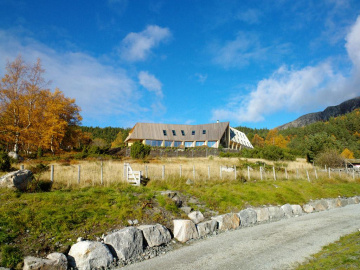
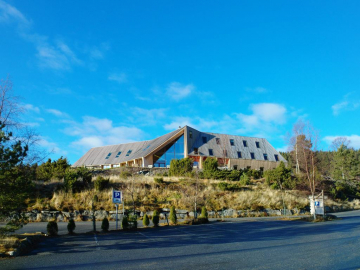
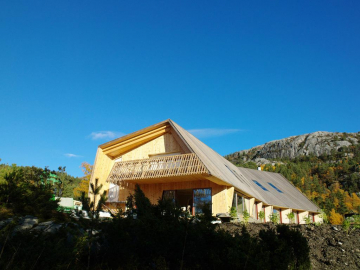
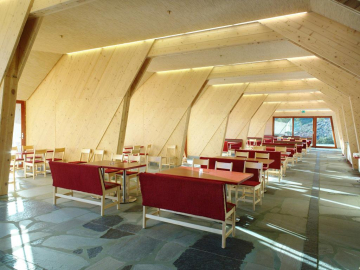
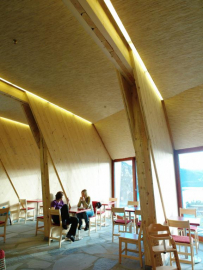
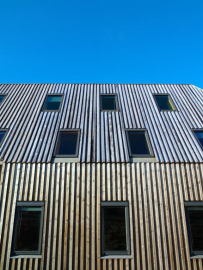
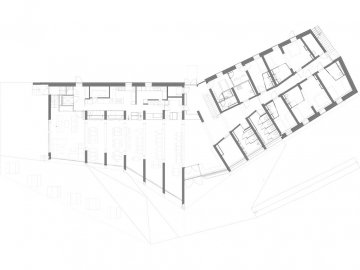
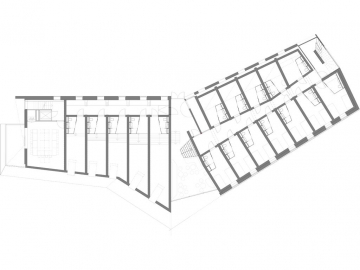
 copy.jpg)
 copy.jpg)
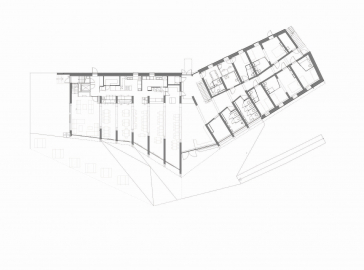
.jpg)
.jpg)
